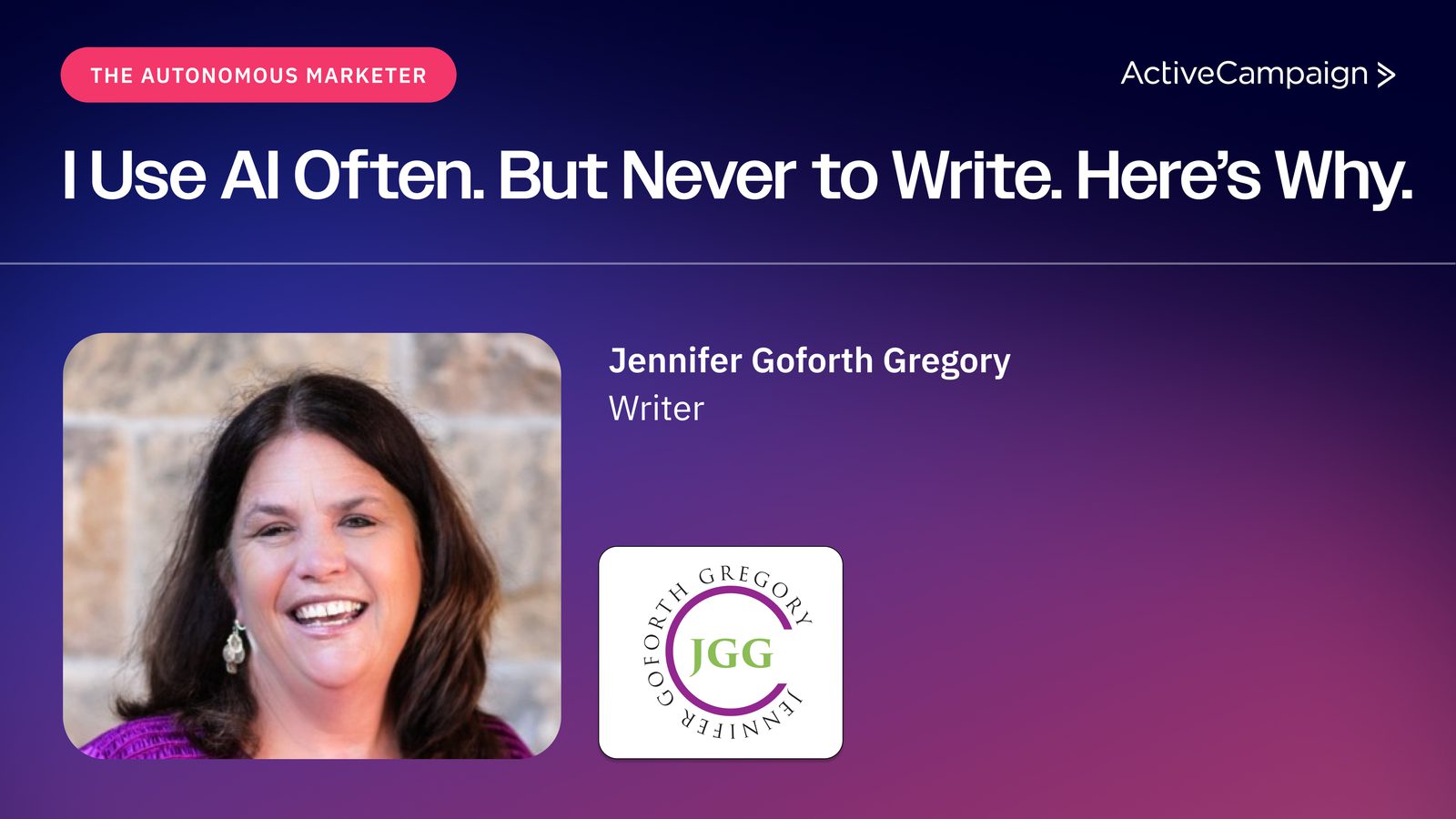Email has come a long way from simply being the electronic equivalent of a letter — an estimated 330 billion emails are sent every single day. So getting your email opened, read, and acted on is not an easy task.
In many scenarios, casual language and loose formatting are fine, and even emojis have slipped into more and more informal emails. However, certain occasions call for a more formal structure, and knowing how to format an email to suit this purpose is crucial.
This guide will teach you the rigid structure to follow when crafting a formal email. We’ll also discuss formatting for two other kinds of emails crucial in the modern business world: marketing emails and those sent for cold sales outreach.
Let’s dive right into it.
This article is part of our Perfect Email series. Click here for a complete guide on how to write an email, templates for different types, and formatting tips to boost your engagement.
How to format an email (for business, marketing, and sales emails)
Formal email messages follow a specific structure, much like a formal business letter. There are a few instances where the formal email format is essential to show respect.
These include:
- Conducting business with someone new
- Formal business environments (legal, for example)
- Discussing a job opportunity
- Contacting a professor or other experienced professional for guidance
As cultural norms continue to change and business environments become more and more casual, it’s generally best to ask if you’re unsure whether to send a formal email. If in doubt, go formal.
Okay, let’s get into the formatting.
Subject line
The first section is the subject line. This is displayed at the top of the email, above even the email address, preceding the email body, and tells the reader what your email is about.
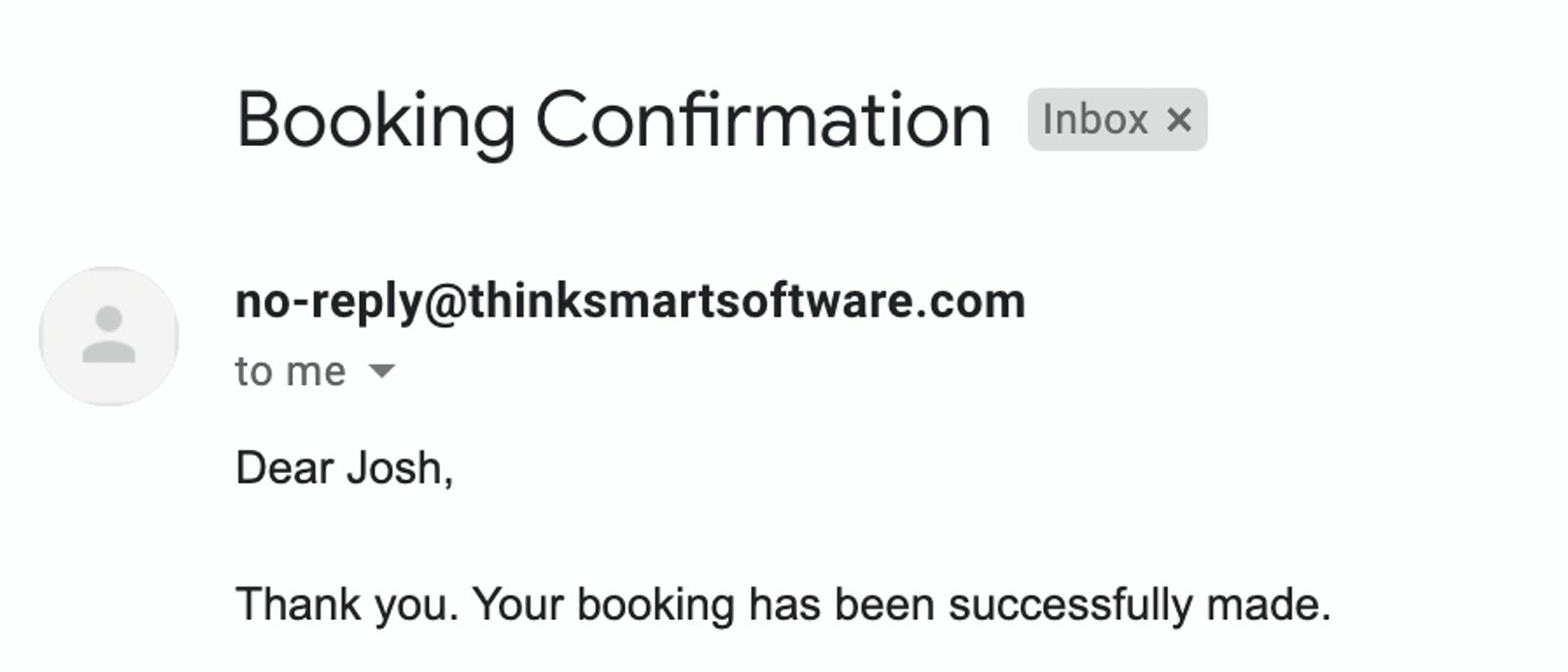
The subject line shows up first on unopened emails, so it’s crucial to get this right. It needs to set the tone with an excellent first impression.
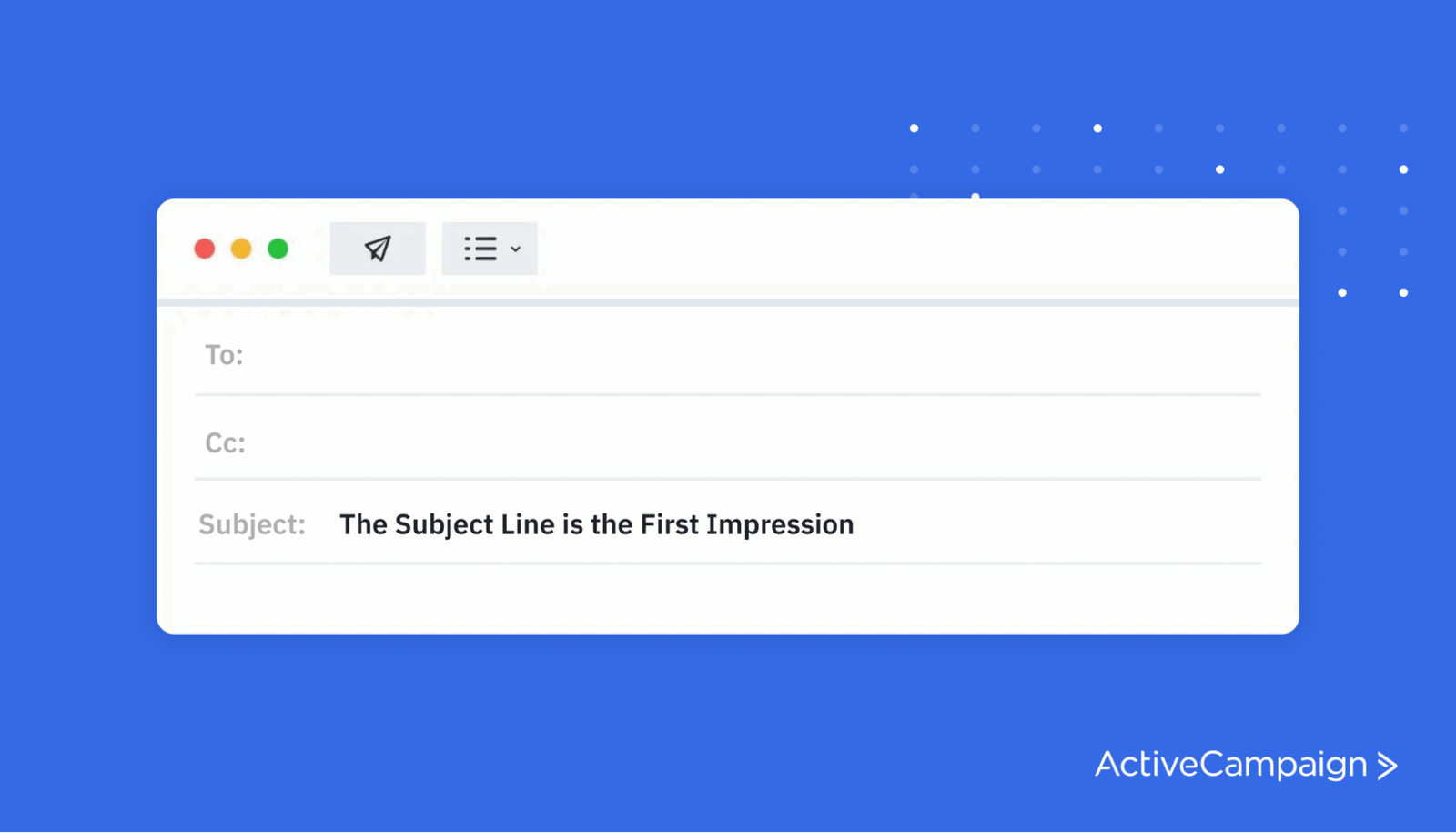
Title case (as in Email Subject Line) is typically read as more formal than sentence case (as in Email subject line), so stick to this when crafting professional email messages. When writing a formal email, your subject line must make what the email is about clear and obvious.
While an informal email can use a subject line like “Your booking,” a formal email should be more informative. For instance, “Booking Confirmation For Doctor’s Appointment - 1/4/22, 2 pm.”
Greeting/salutation
The go-to formal salutation is Dear, as in “Dear John,”. Note the use of a comma after the recipient’s name, which is important in formal email writing. Like in a formal business letter, it’s also common to use a title like Mr., Mrs., or Dr., and the last name in certain business emails, e.g., “Dear Mr. Smith,”.
Greetings such as “Hey,” “Hi,” and “Hello” are considered informal, so they are best for casual emails. If you don’t know exactly who will receive your email, you may use the salutation “To whom it may concern,”.
Always research the person you’re emailing and use their correct name and title whenever possible. Only use a generic greeting when you can’t know who will receive it, for example, if you’re emailing to appeal a parking fine.
Email body
Your email should be concise and to the point — nobody likes receiving an essay in email form, even in formal situations. To write an effective email, it must get to the point, and quickly.
There are no hard and fast rules around email length, but the best practice is to say what you need to say in as little space as possible.
Other conventions to bear in mind include:
- Keeping your paragraphs short — No more than 2–3 sentences per paragraph
- Avoiding slang, abbreviations, and colloquialisms
- Introducing what the email is for in the first paragraph (“This email is to inform you that…)
Closing
Lastly, close off your email with a short remark such as “Yours sincerely,”. There are quite a few formal email closings that are suitable to use in professional email signatures:
- Regards
- Kind regards
- Best regards
- Warm regards
- Sincerely
- Yours sincerely
- Yours faithfully
- Cordially
- Respectfully
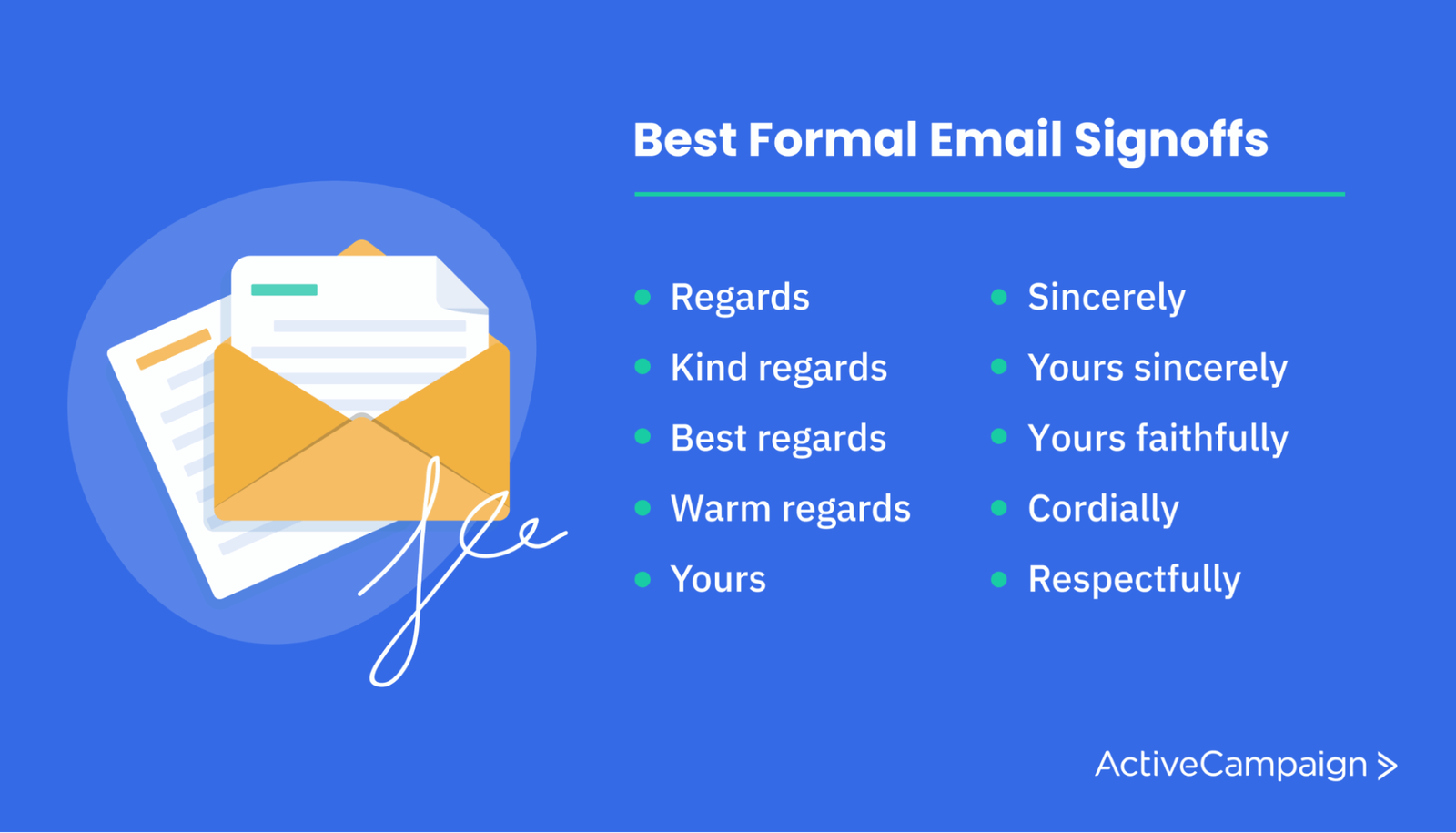
All are formal, so you can choose the option you feel reflects your personality.
You may also include an email signature with your relevant contact information if the email recipient wants to reach out through another medium (perhaps they need to call you to discuss your email further).

Of course, your email signature doesn't need to look exactly like this, but it should explain who you are, what you do, and a way to reach you, like your phone number. Informal emails can also include a simple signature like your name and phone number if applicable.
The majority of emails won’t need to follow the 'who you are, what you do, way to reach you' structure. Casual conversations between friends and even emails to colleagues often don’t need to be so rigid. There is no one correct email format. It all depends on the purpose of the message and who will receive it.
Interested in the format of other types of emails? Maybe you want to format a community newsletter or promotional email correctly. Or, you're hoping to craft a compelling welcome or thank you email. We've got you covered.
How to format a cold sales email
While many companies now use an inbound model for long-term organic growth, cold outreach still has a place and can be a powerful tool for brands to quickly get in front of new prospects.
An email is “cold” when the recipient doesn’t know the sender and isn’t expecting the email.
If you sell software to other businesses and choose to send an email to a list of companies that would benefit from your product, that would be a cold sales email.
The AIDA cold email format
Before we get into the details, let's talk about a framework that may be useful to you. The AIDA (attention, interest, desire, and action) email format is a timeless and powerful structure for writing cold emails. There are four simple components.
Opening greeting“Hi [First Name]” (It's relatively common for cold emails to take on a fairly casual tone so using 'Hi' instead of 'Dear' works in this case).
First paragraphInstead of immediately introducing yourself, you'll start by highlighting a problem or common challenge that person or their company is likely to run into that your product/service can solve. First introduce the challenge and then set yourself up as the solution.
Second paragraphThis is where you introduce the product and explain how it's features and functionality can solve their problem. Touch on the benefits this person/their company can expect to see when they use the product.
Third paragraphThis is the call to action section. Typically, the structure would follow something along the lines of "Interested in seeing how [Product] can [solution to a business problem]? I'd be happy to schedule some time and walk you through the platform.”
The AIDA format is a great way to show value to the recipient instead of trying to sell them something without explaining how it'll benefit them. The key to sending an effective cold email is to understand what problems the recipient may be facing and position yourself as the solution that they can't pass up.
Craft a click-worthy subject line
The first puzzle piece of the cold email format is is tackling the subject line and getting your email opened, which 69.3% of emails fail at. That means you need to craft a persuasive email subject line if you want your emails opened.
Here are a few best practices to boost your email open rates:
- Use a question to build intrigue
- Leverage referrals (“XYZ suggested I reach out”)
- Be genuine and honest (i.e., don’t write misleading subject lines)
- Personalize where possible (“Hey, I saw your post on LinkedIn about…”)
- Focus on customer pain points (“Struggling with X?”)
- Keep it concise — 6–10 words is the sweet spot
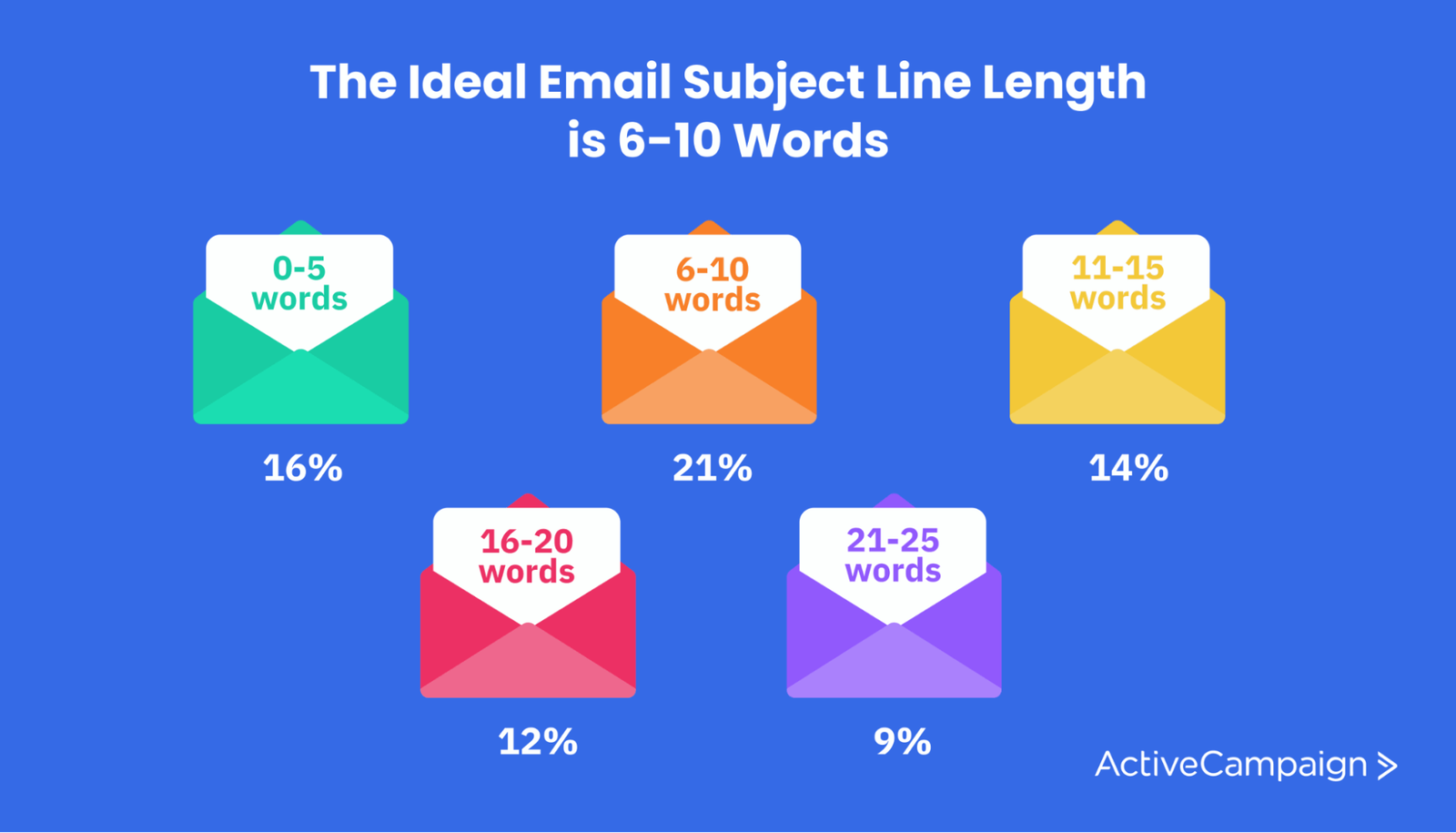
Keep your intro short, sweet, and sincere
Speaking of concision, keep your intro (well, your whole email, really) short and sweet. Immediately explain why you’re emailing. Don’t play the “I’ve just got a question for you” game if that’s not the actual intention of your email. People appreciate candor, and they hate having their time wasted.
Using the prospect’s name helps you establish rapport and not look like you fired the same email off to 500 different email addresses
Keep the copy customer-centric, as in “We want to help you speed up your workflows and regain time in your workday” rather than “We’re a work productivity platform.”
Avoid being vague, but try where possible to keep your email short. The ideal length of an email is typically between 50 and 125 words, with emails of this length seeing response rates above 50%.
Provide value upfront
We all know that the ultimate objective of your cold email is to get a sale (even though the first step is just to have a conversation), but that doesn’t mean your message can’t provide immediate value to the reader.
If you’re able to provide some value upfront, you’ll build trust, establish yourself and your brand as an authority, and increase the chance of turning that conversation into a sale.
For example, a work productivity platform could share a quick tip on increasing performance: “P.S. We’ve found that using the Pomodoro Technique boosted our team's productivity by 12%. Check out our post on it here.”
Leverage social proof
Social proof is a powerful lever for influencing human motivation.
Logos, reviews, testimonials, and even the names of companies you’ve helped before (if you’re B2B) can be used to build trust and show you’re an established company with a solid track record.
A simple way to slip this into a cold email message without sounding like you’re bragging is to tag your value prop with some company names.
For example, instead of simply writing, “We help companies optimize their workflows and increase productivity.”, you can say, “We’ve helped companies like Slack, Subway, and Saltgrass Steakhouse optimize their workflows and increase productivity.”
End with a call to action
Remember, our goal is to get our recipient to not only open and read our email but to respond! That means we need to direct them to take some kind of action (which is known as a call to action or CTA).
There are two common styles of CTA in a cold sales email.
The first is to ask a question designed to spark a conversation, for example:
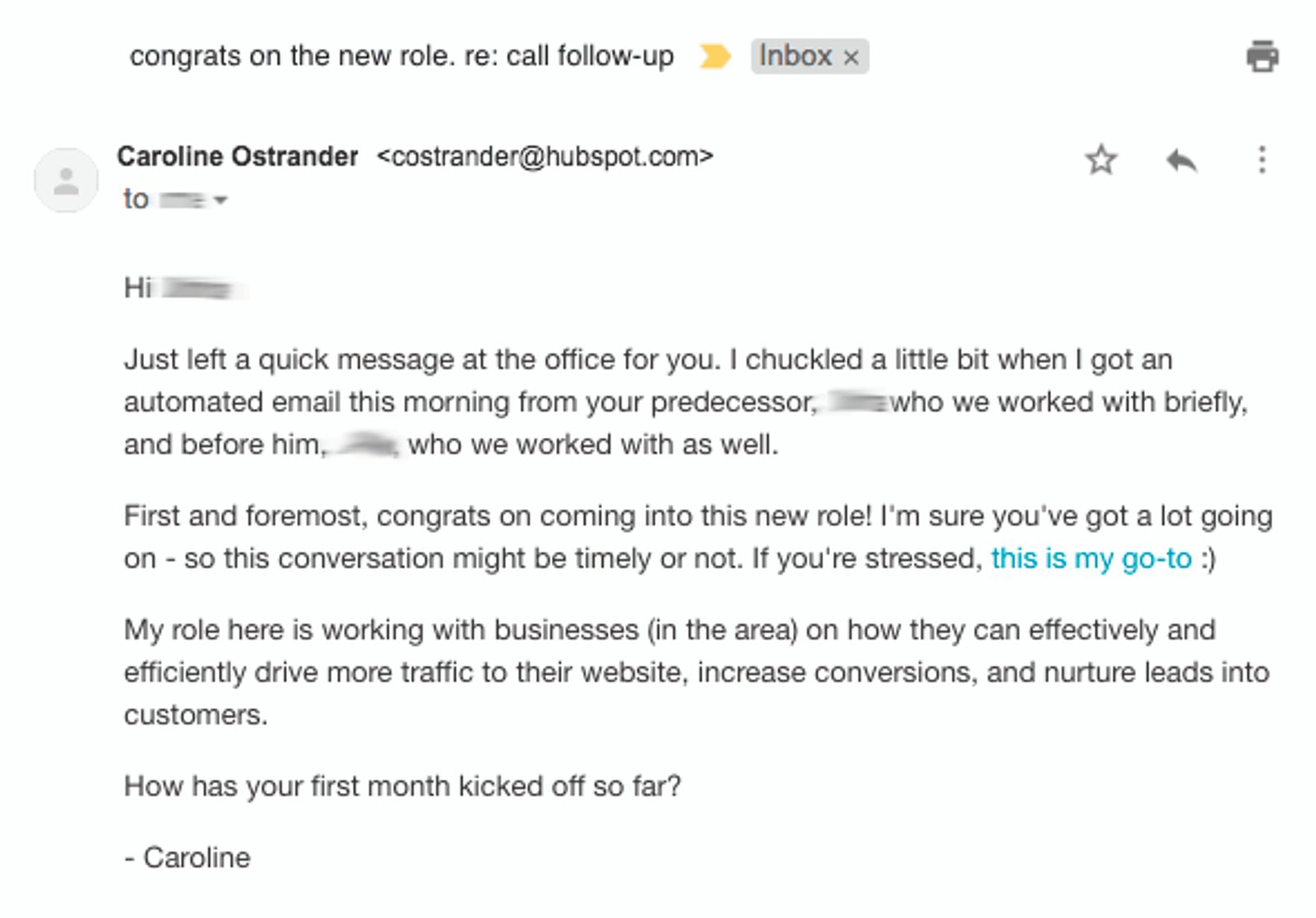
The second is to ask them to take action, like signing up for a webinar or booking a demo with you.
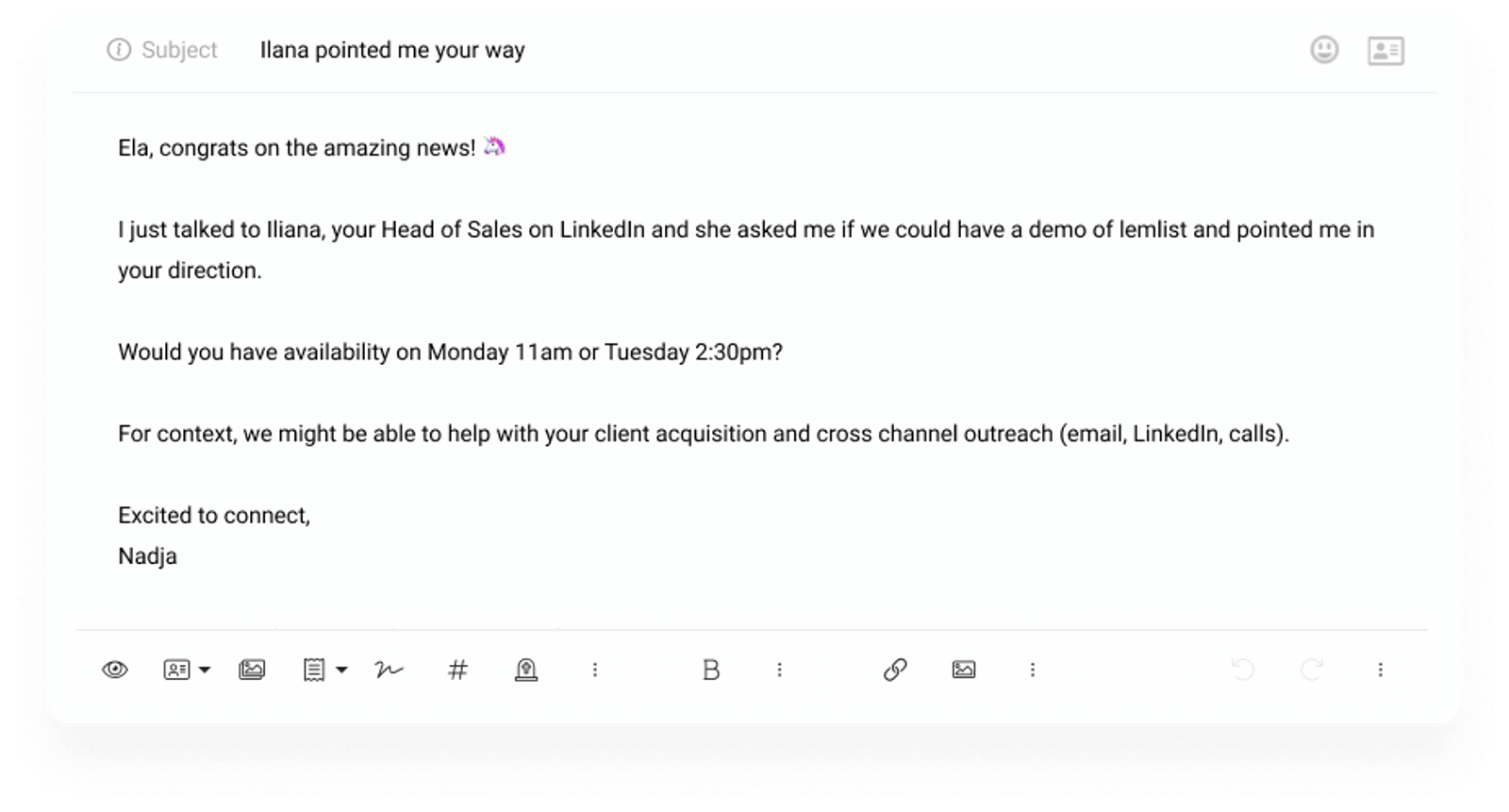
The hidden step: following up
Now that you've crafted a compelling cold email, you wait and wait and wait but don't hear back. This is common. Cold emails can get lost or go ignored so it's important to follow up after a period of time has passed (a few days is usually a good holding period before you can go ahead and send a follow-up).
Following up can be the difference between closing and losing a potential lead.
Studies show that 70% of salespeople don't follow up after the initial email but there's a 25% chance they could get a response if they did.
Give the recipient a few days before you reach out again but don't hesitate. You have the chance to start a productive and valuable conversation just by bumping your email back to the top of their inbox. Most people just need a little gentle nudging.
How to format a marketing email
The term “marketing email” covers several different types of email, including:
- Newsletters
- Product updates
- Lead nurturing emails
- Promotional emails
- Event invitations
Broadly speaking, marketing emails are emails sent by the marketing department to a large group of recipients, either your entire customer base or a particular segment. That means marketing emails can take on a very different format.
Make sure your email format suits your audience
Email marketing platforms open up a new formatting possibility: HTML.
Where formal, casual, and sales emails all use a plain-text format (what we could describe as a ’regular’ email), these platforms allow marketers to design content-rich emails with images, links, and CTA buttons.
HTML is what allows marketers to design emails that look like this:

Here’s the thing, though:
Just because you can build emails using sharp imagery and brand colors doesn’t mean you should.
It’s important to understand your audience and format emails appropriately. Run A/B tests and surveys to determine whether emails with images are more effective than plain-text emails or not before committing to a single approach.
Use power words to increase open rates
Open rates are a constant challenge for email marketers. One way to increase your marketing email open rate is to craft your subject lines to include one or more power words. Power words promote an emotional response, create intrigue, and drive motivation and action.
Examples include:
- Surprising
- Fearless
- Forbidden
- Allure
- Limited
- Remarkable
- Authentic
- Daring
Whatever you do, avoid using spammy-sounding subject lines in your marketing newsletters. And maintain higher open rates by avoiding the most-used scam email subject lines.

Personalize greetings using mail merge fields
Personalization is crucial to marketing email success. While using a recipient’s name in email communications is far from the be-all and end-all of personalization, it’s a great (and easy) start.
The mail merge feature in your email marketing platform will allow you to craft a single marketing email and automate the inclusion of the recipient’s name.
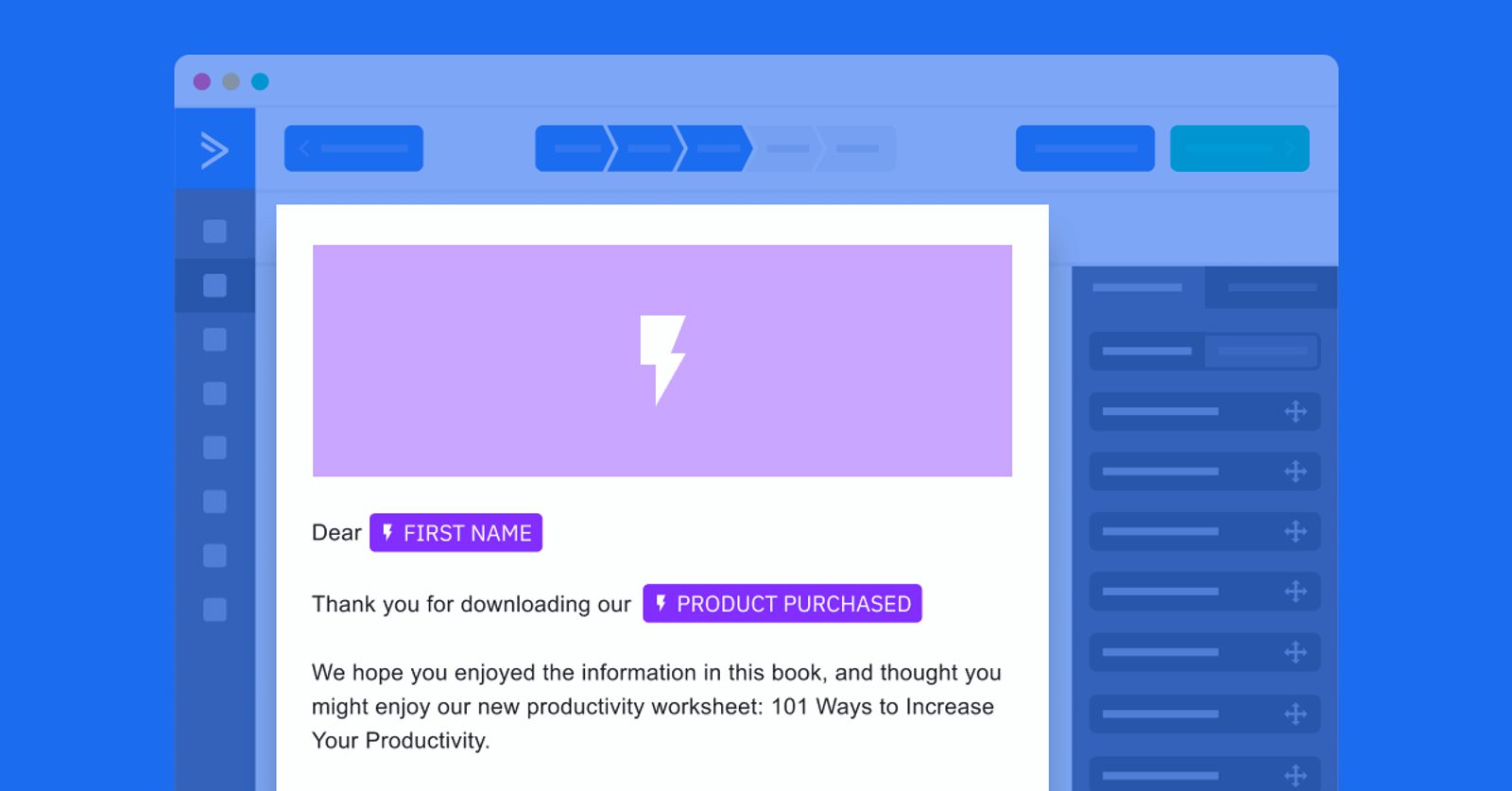
Keep it concise and use second-person language
Getting your emails opened is half the battle. The other half is getting them read.
Don’t be self-indulgent here. Keep emails concise and to the point. If you have something lengthy to share (a new piece of content, for instance), it’s best to write a shorter email and link out to the longer story on your website.
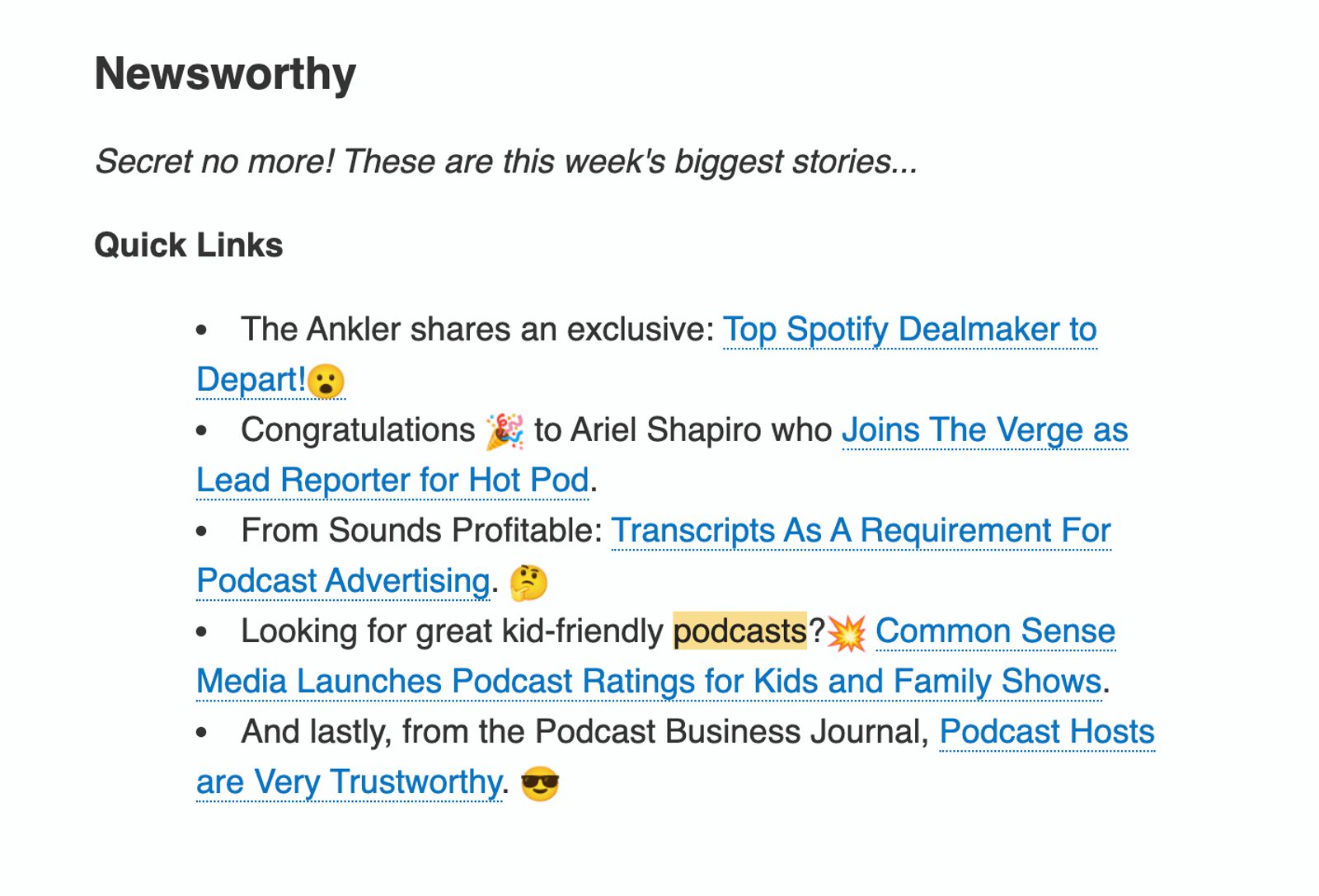
Second-person language (“you will be able to” as opposed to “marketers will be able to”) should be your go-to style. Second-person language puts the reader at the center of the story and helps them visualize themselves gaining the benefit you’re discussing.
In the above example, the phrase “marketers will be able to” makes the reader think of how the benefit applies to other marketers. Switching this up for “you will be able to” resonates more strongly with the reader and helps them visualize a situation where they are receiving that benefit.
Don’t neglect preheader text
Preheader text is the text that displays under your subject line in an email inbox, for example:

Use this space to drive open rates by ensuring your preheader text is action-based and points to what the reader will gain from opening your email.
Notice how Sound On Sound has failed to take advantage of this opportunity in the above example, whereas BurgerFuel and Auckland Live provide more context and build the case for recipients to read further.
Better Emails, Better Open Rates
Make your CTAs stand out
Goal number one is to get your email opened. Goal number two is to get it read. But a marketing email’s final goal is to get the reader to take some kind of action.
That means we need to include a compelling CTA for our readers to follow.
HTML-formatted email newsletters give us a design advantage in that CTAs can be big shiny buttons rather than hyperlinked text that looks just like the rest of our email copy.

Use contrasting colors (like in the example above) to make your CTAs stand out and boost click-through rates.
The best practice is to stick to just one or two CTAs per email. When using multiple CTAs, try to direct readers to the same action, as they can get overwhelmed when presented with too many options.
Take this second CTA, for example, which uses a different copy but guides readers to the same place.
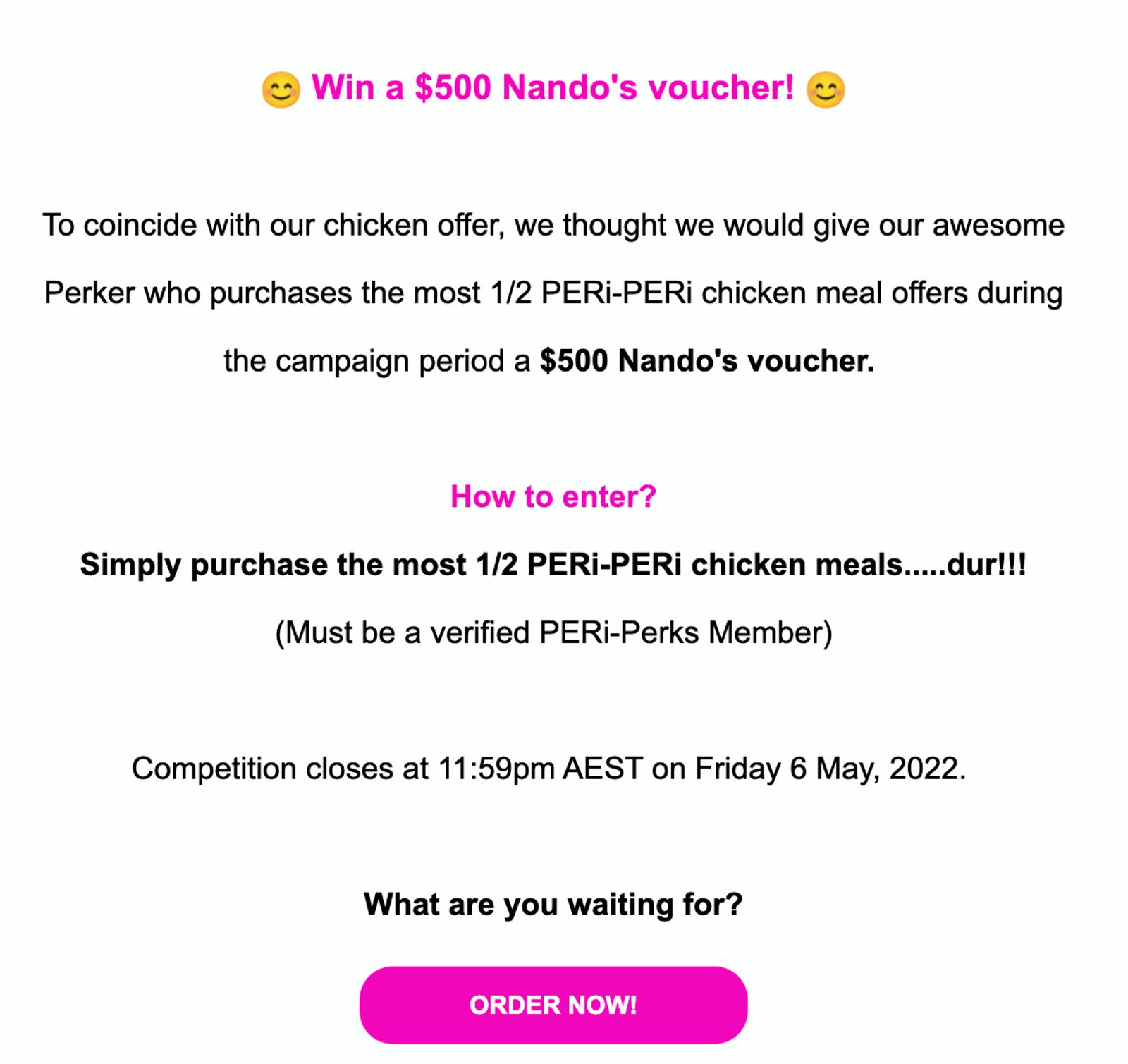
Make a good first impression
Understanding how to format an email for a given purpose is critical in improving the likelihood that your message gets opened, read, and responded to.
Some applications require a strict structure, such as sending a formal email in a professional context. Others can be a bit looser.
In any case, you can speed up your email writing and formatting processing by using pre-built, customizable email templates. ActiveCampaign has a ton of email templates available. Check them out here!
Writing great emails is the first step. Automating and tracking their results is the next to truly understand how to engage your audience.
If you're looking to try your hand at writing, designing, sending, and tracking the results of your business emails, you can try ActiveCampaign for free. Sign up for a trial in the box to the right →



